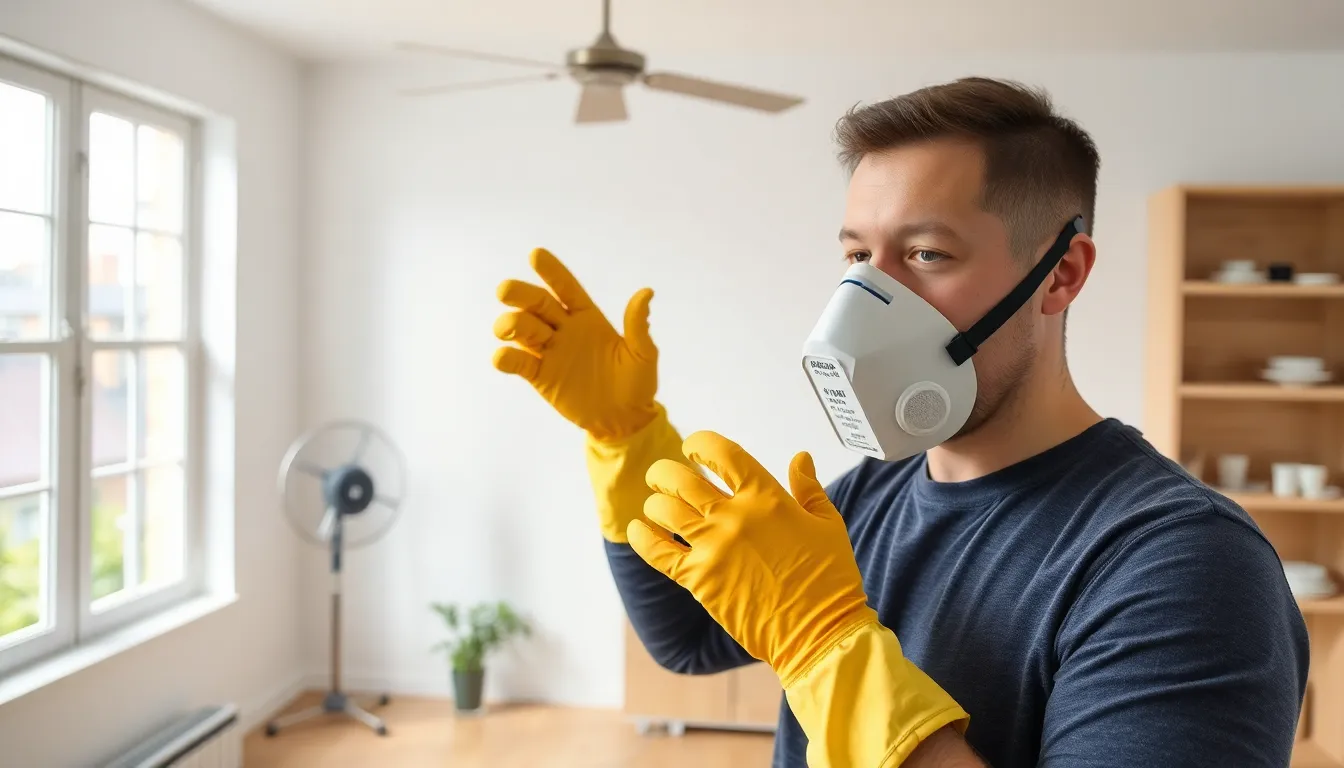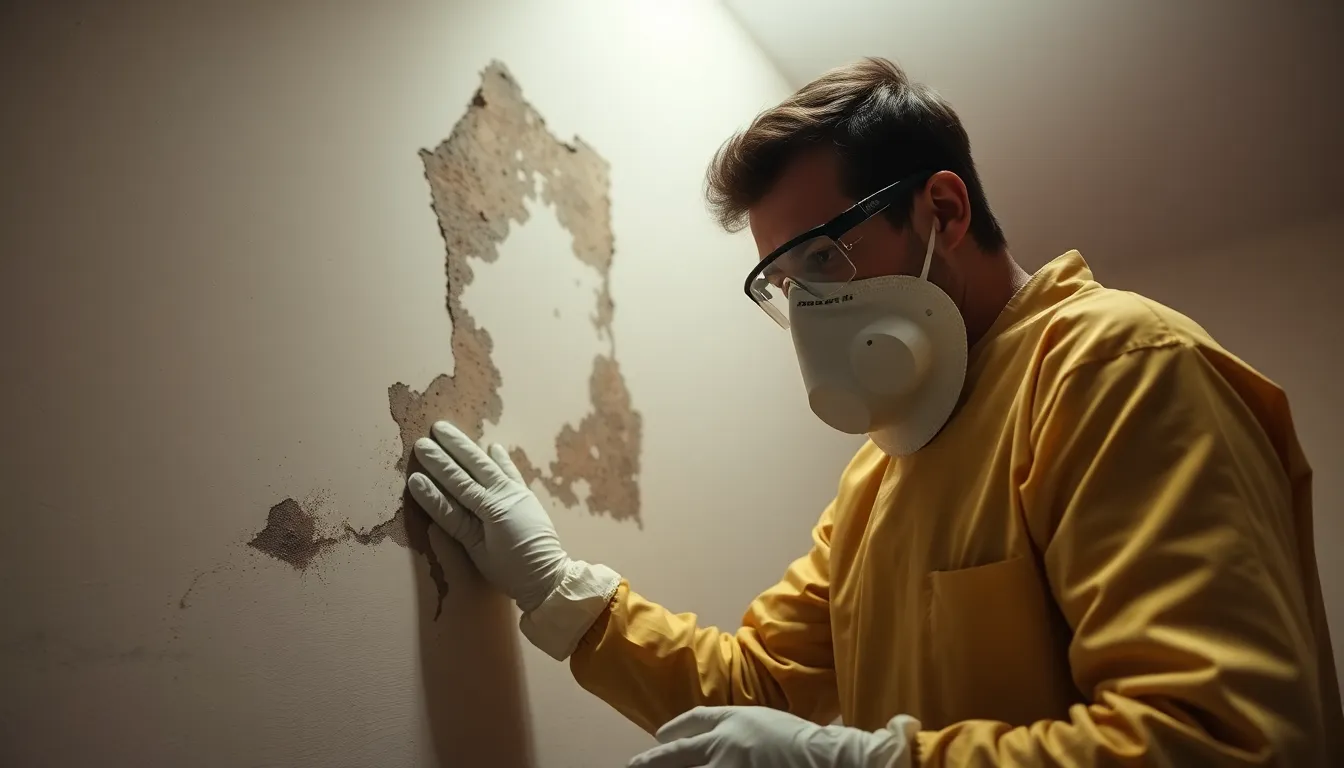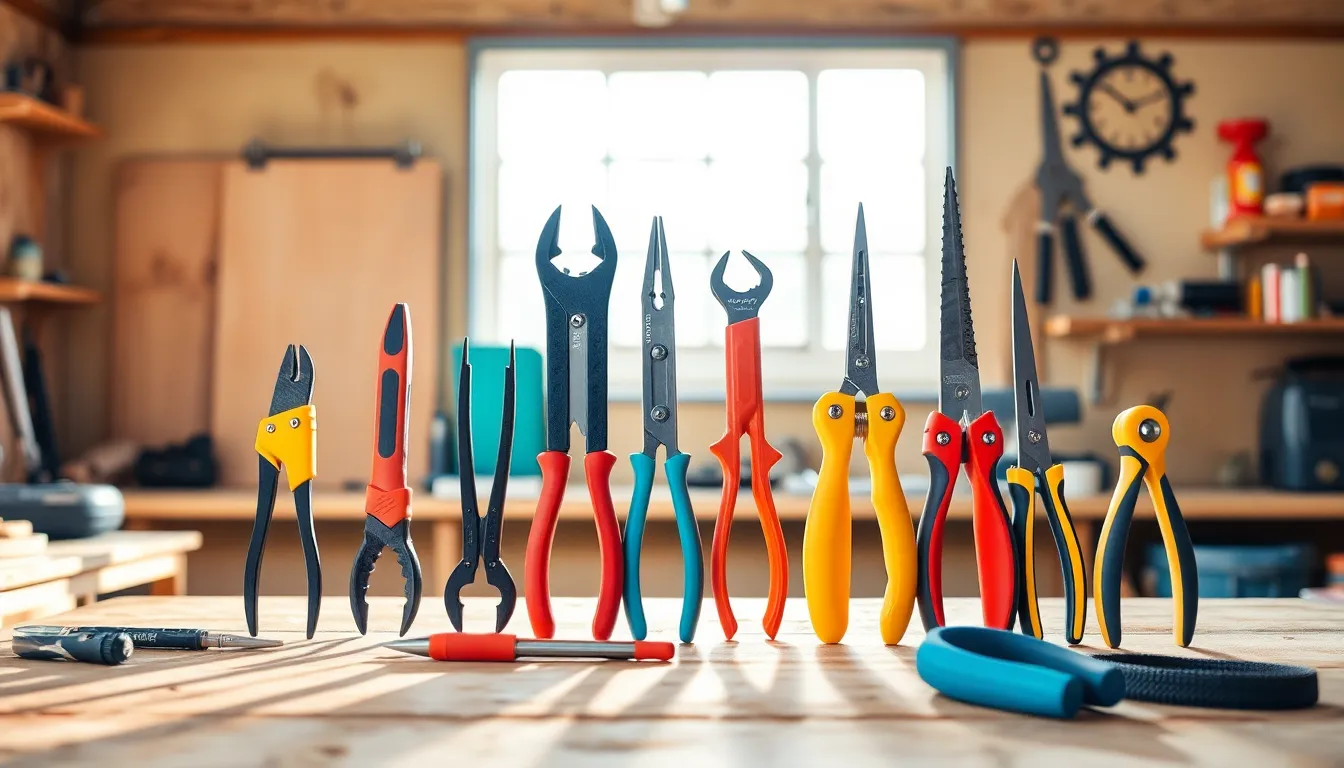Mold on drywall can feel like an unwelcome guest that just won’t leave. It’s sneaky, often hiding in the shadows until it decides to throw a moldy party right in your living room. But fear not! With the right approach, you can kick that pesky intruder to the curb and reclaim your space.
Table of Contents
ToggleUnderstanding Mold Growth on Drywall
Mold growth on drywall poses significant risks to health and property. Identifying its causes and signs of infestation helps homeowners address the issue promptly.
Causes of Mold on Drywall
Moisture creates ideal conditions for mold on drywall. Water leaks from plumbing issues or roof damage often contribute to damp environments. High humidity, especially in bathrooms or kitchens, increases the chances of mold proliferation. Inadequate ventilation exacerbates moisture buildup, allowing mold spores to thrive. Houseplants can also provide moisture, especially when overwatered. Successive cycles of temperature change lead to condensation, promoting mold growth.
Signs of Mold Infestation
Visible stains on drywall indicate potential mold issues. Black or green specks often appear in damp areas. A musty odor frequently accompanies mold presence, suggesting a hidden problem. Peeling paint or wallpaper may point to moisture saturation behind the surface. Homeowners should monitor any increase in allergy symptoms, as mold can trigger respiratory issues. Spotting water stains or discoloration also signals mold development. Regular inspections of less visible areas, such as corners and behind furniture, prove vital for identifying infestations early.
Safety Precautions

Taking safety precautions is essential when dealing with mold on drywall. Proper gear and ventilation can significantly reduce health risks during the removal process.
Protective Gear
Wearing protective gear minimizes exposure to mold spores. Use gloves made of rubber or nitrile to prevent skin contact. An N95 respirator protects against inhaling spores, while goggles prevent irritation to the eyes. Protective clothing, such as long sleeves and pants, should cover exposed skin. Disposable gear is a practical choice, ensuring safe disposal after use. Following these guidelines fosters a safer working environment.
Ventilation Considerations
Ensuring adequate ventilation is vital during mold remediation. Open windows to allow fresh air circulation, promoting a natural airflow. Running fans can help disperse airborne spores, preventing accumulation within the space. Utilizing an air purifier equipped with a HEPA filter captures smaller mold particles effectively. Maintaining exhaust fans in bathrooms and kitchens reduces moisture levels, deterring mold regrowth. Taking these steps creates a healthier environment during mold treatment.
Steps to Treat Mold on Drywall
Treating mold on drywall requires systematic steps for effective removal. Following these steps ensures a thorough approach to eliminating mold and restoring breathable living spaces.
Assessing the Damage
Assessing the damage involves inspecting the entire area for mold growth. Start by examining basements, corners, and behind furniture. Look for visible signs, such as dark patches or peeling paint. Feel for soft spots, which indicate compromised drywall integrity. Identifying the extent of the infestation helps determine the appropriate treatment method. Document any affected areas and prioritize the most severely impacted sections.
Cleaning Small Areas
Cleaning small areas of mold can be handled easily with basic materials. Use a mixture of water and mild detergent in a spray bottle. Spray the solution onto the moldy surface and let it sit for several minutes. Scrub the area using a stiff brush, ensuring thorough removal of mold spores. Rinse the brush frequently to avoid spreading mold. After scrubbing, wipe the area with a damp cloth to eliminate residual debris. Allow the surface to dry completely, as moisture fuels further growth.
Removing Heavily Affected Sections
Removing heavily affected sections demands more effort and caution. Begin by preparing the workspace, ensuring proper ventilation and wearing protective gear. Cut away the damaged drywall using a utility knife, being mindful of electrical wiring and plumbing. Remove all contaminated materials, including insulation, and place them in sealed bags for disposal. Install new drywall in place of the removed section, securing it properly. Finish with joint compound and paint to blend with the surrounding area, ensuring a seamless restoration.
Preventing Future Mold Growth
Preventing mold growth involves several proactive measures. Implementing these strategies ensures a healthier, mold-free environment in the home.
Controlling Humidity Levels
Humidity control serves as a crucial factor in mold prevention. Maintaining indoor humidity below 60% significantly lowers mold growth risk. Using dehumidifiers in damp areas, like basements and bathrooms, helps manage moisture levels effectively. Ventilation systems also play a vital role in air circulation and moisture control. Ensure bathrooms and kitchens have exhaust fans operational during and after cooking or showering.
Regular Inspections and Maintenance
Regular inspections of potential mold-prone areas promote early detection. Inspect areas like behind appliances and inside cabinets for early signs of moisture or mold. Performing maintenance on gutters and roofing prevents water accumulation, which contributes to mold growth. Homeowners should replace damaged caulking and seals around windows and doors, minimizing water intrusion. Scheduling professional inspections at least once a year helps identify hidden issues, ensuring prompt action.
Treating mold on drywall is essential for maintaining a healthy living environment. By understanding the causes and signs of mold growth homeowners can take proactive steps to prevent infestations. Implementing safety precautions during remediation is crucial to protect against harmful spores.
Following systematic cleaning or replacement methods ensures effective mold removal and restoration. Additionally maintaining proper humidity levels and regular inspections can significantly reduce the risk of future mold issues. With diligence and the right approach homeowners can create a safe and mold-free space for themselves and their families.





